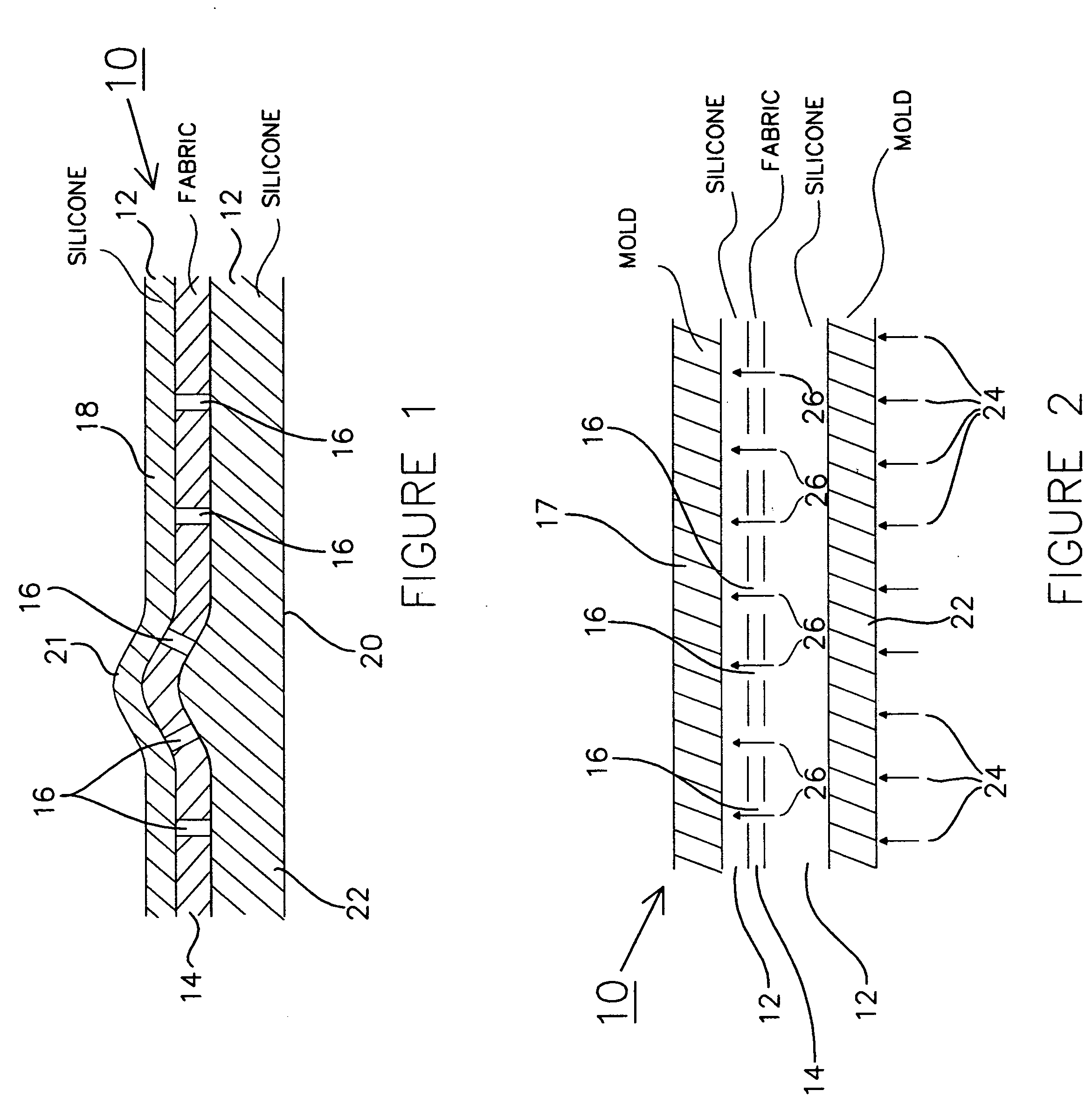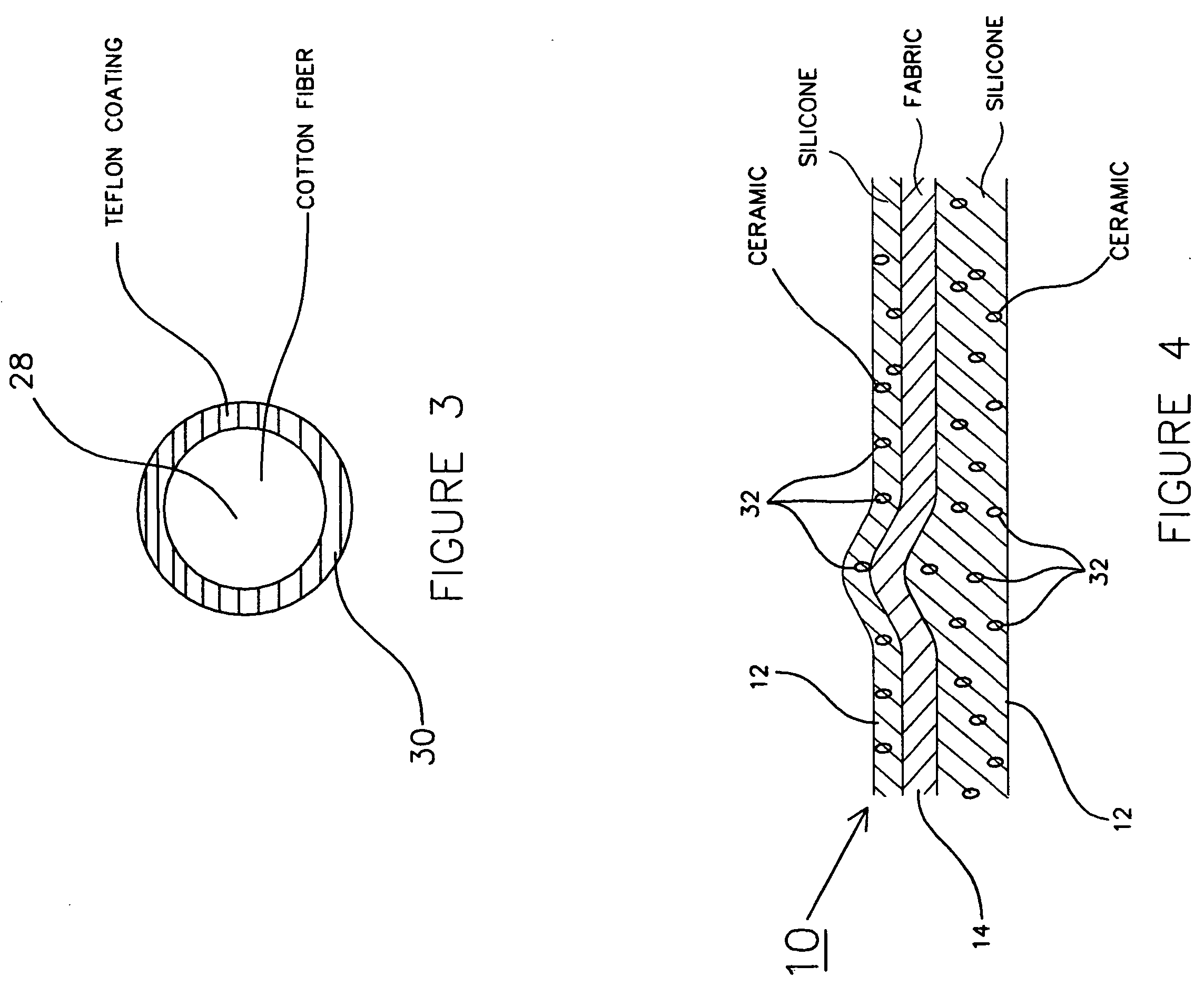Composite fabric/silicone structure
a technology of composite fabric and silicon, applied in the field of composite polymer structure, can solve the problems of lack of design flexibility provided by fabrics that can be woven into virtually infinite numbers,
- Summary
- Abstract
- Description
- Claims
- Application Information
AI Technical Summary
Benefits of technology
Problems solved by technology
Method used
Image
Examples
Embodiment Construction
[0011] Referring now to FIG. 1, the layered composite structure 10 of the present invention comprises a silicone polymer matrix 12 encapsulating a woven fabric layer 14. As used herein, the term “encapsulated” is meant to define a state wherein the “porous” or apertured woven fabric is completely or virtually completely encased in or surrounded by the silicone matrix material, including through the penetration of silicone matrix material through the pores thereof as described hereinafter. As will be demonstrated, described and depicted in subsequent discussion, and schematically shown in FIGS. 1 and 2, silicone polymer 12 penetrates or permeates woven fabric layer 14 through apertures 16 (shown schematically in FIG. 1) therein to provide total or virtually total encapsulation of woven fabric layer 14 in silicone polymer 12. For reasons that will be described more fully below, it should be noted that woven fabric layer 14 is closer to surface 18 of composite 10 than it is to surface ...
PUM
| Property | Measurement | Unit |
|---|---|---|
| temperatures | aaaaa | aaaaa |
| transparent | aaaaa | aaaaa |
| oxygen impermeable | aaaaa | aaaaa |
Abstract
Description
Claims
Application Information
 Login to View More
Login to View More - R&D
- Intellectual Property
- Life Sciences
- Materials
- Tech Scout
- Unparalleled Data Quality
- Higher Quality Content
- 60% Fewer Hallucinations
Browse by: Latest US Patents, China's latest patents, Technical Efficacy Thesaurus, Application Domain, Technology Topic, Popular Technical Reports.
© 2025 PatSnap. All rights reserved.Legal|Privacy policy|Modern Slavery Act Transparency Statement|Sitemap|About US| Contact US: help@patsnap.com


